In the heart of Wyoming, a unique geological wonder stands tall and solitary against the open prairie landscape. Known as Devil’s Tower, this striking rock formation has captivated visitors for centuries with its towering presence and mysterious origins. Declared America’s first national monument by President Theodore Roosevelt in 1906, the site holds deep significance, not just as a natural wonder but also as a sacred place for many Native American tribes. Let’s delve into the remarkable story behind Devil’s Tower, its geological mystery, its cultural importance, and why it continues to be a focal point of fascination today.
Unraveling the Mystery: What Makes Devil’s Tower Special?
Devil’s Tower is a colossal formation made primarily of phonolite porphyry, an igneous rock that lacks the shiny appearance of quartz-filled granite. Rising 867 feet from its base and reaching a summit 5,112 feet above sea level, the tower dominates the Wyoming skyline. Its unique vertical columns and nearly perfect geometric precision make it a standout geological structure.
Scientists believe the tower was formed as an igneous intrusion—molten magma that never reached the surface and cooled underground, solidifying over millions of years. Unlike other formations like sedimentary buttes or volcanic lava flows, Devil’s Tower is a geological marvel due to its distinct shape and isolated presence.

The Legends and Lore: True Stories Behind Devil’s Tower
For many Native American tribes, Devil’s Tower is a deeply spiritual site. It features prominently in tribal legends passed down for generations. The Kiowa people tell the story of seven sisters who, while being chased by bears, sought refuge on a small rock. The rock miraculously grew, raising the girls to the heavens and transforming them into the Pleiades star cluster. The deep vertical grooves on the sides of Devil’s Tower are said to be the scratches left by the bears.
The Lakota people have their own tale about a boy who transformed into a bear and chased his sisters up the tower, leaving claw marks on the rock’s surface. Other tribes, including the Cheyenne, Crow, and Arapaho, share similar stories that highlight the tower’s connection to the natural and spiritual worlds.
The site goes by many names in Native languages, such as “Mato Tipila” or “Bear Lodge,” underscoring its sacred status. Despite the modern name, the reverence and stories associated with the formation long predate the “Devil’s Tower” title.
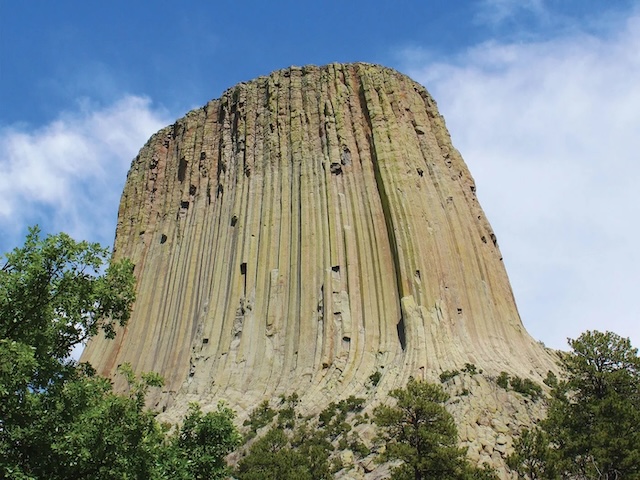
The Name Debate: Why Is It Called Devil’s Tower?
The name “Devil’s Tower” came about in 1875 when Colonel Richard Irving Dodge led an expedition to the area. According to legend, Dodge’s interpreter mistakenly translated the Native American name for the site to mean “Bad God’s Tower,” leading to the English name we know today. This name has been the subject of debate, as many Native American groups have advocated for renaming it to reflect its cultural and spiritual significance, rather than a colonial misinterpretation.
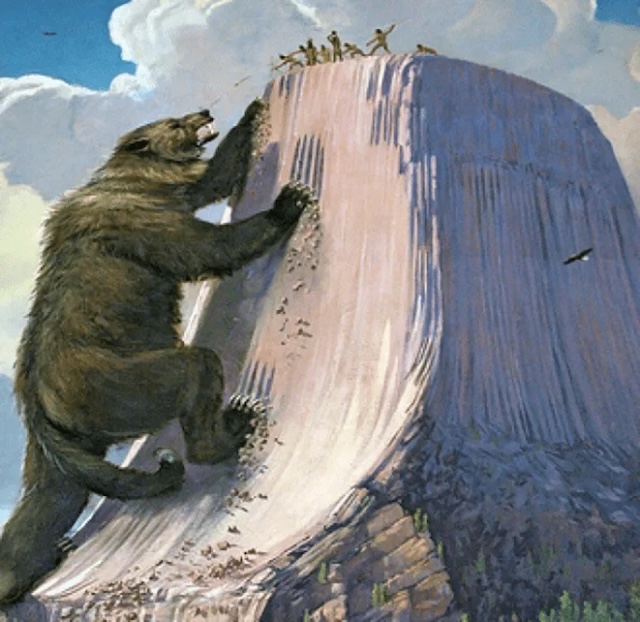
The Adventurers’ Paradise: Climbing the Devil’s Tower
Aside from its historical and cultural significance, Devil’s Tower is also a haven for adventure seekers, particularly climbers. The first documented ascent of the tower occurred in 1893, and today, it remains a popular destination for climbers due to its distinctive columnar structure and vertical walls.
However, the tower’s status as a sacred site means that climbers are asked to respect tribal traditions. In particular, the month of June is a time of spiritual ceremonies for many Native American groups, including the Sun Dance and pipe ceremonies. During this time, climbers are encouraged to refrain from climbing out of respect for these practices.
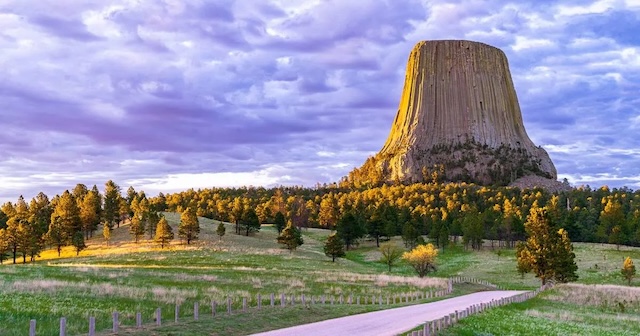
A Monument Beyond Borders: Devil’s Tower in Wyoming and Beyond
The towering formation has not only drawn the attention of tourists and climbers, but it has also found a place in pop culture. Most famously, Devil’s Tower was prominently featured in Steven Spielberg’s sci-fi classic Close Encounters of the Third Kind. Its otherworldly appearance made it the perfect backdrop for the film’s extraterrestrial storyline, cementing the tower’s status as a cultural icon.
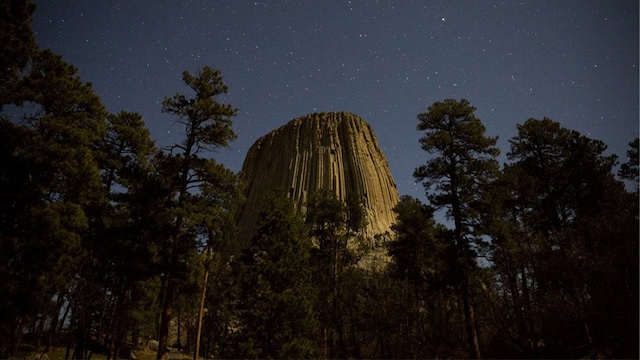
Inside the Tower: Unveiling the Mysteries Within
While many legends suggest the interior of Devil’s Tower holds hidden secrets, geologists agree that it is a solid structure made entirely of dense igneous rock. The exterior’s characteristic vertical columns are mirrored within, though the interior remains largely unexplored due to its protected status. The mystery of what lies beneath and within the massive rock formation adds to its allure, drawing curiosity from both scientists and the general public.
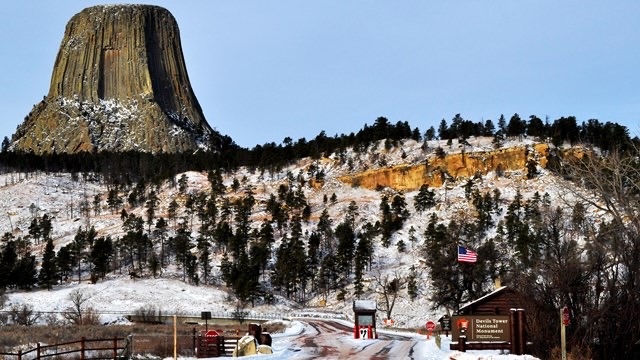
Preserving a Sacred Site: Conservation and Respect
Devil’s Tower remains an enduring symbol of both natural beauty and cultural heritage. The National Park Service works closely with Native American tribes to preserve the site and ensure it remains a place of reverence. Efforts to protect the landscape from overdevelopment, combined with educational outreach, help visitors appreciate both the geological significance and the spiritual importance of this natural wonder.
Tourists and climbers are encouraged to visit the monument with mindfulness, understanding its historical and cultural significance. By doing so, they contribute to the preservation of a site that not only shaped America’s national heritage but also serves as a spiritual anchor for many Native American tribes.
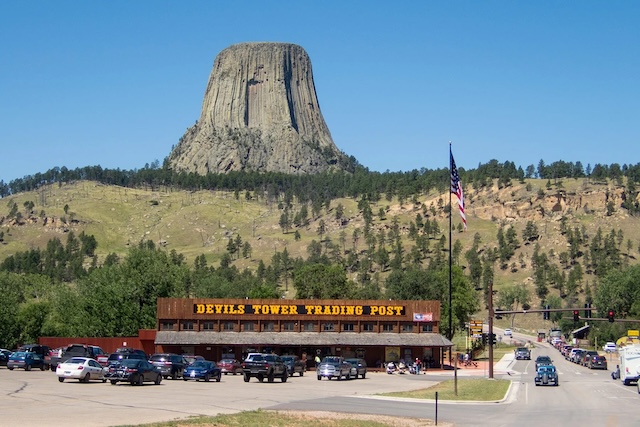
Conclusion
Devil’s Tower is far more than just a natural formation—it’s a symbol of America’s historical, cultural, and spiritual landscape. As the first national monument, it holds a unique place in the nation’s history, while also being a sacred site revered by many Native American tribes. Its towering presence invites awe, curiosity, and respect, reminding us of the delicate balance between nature and human heritage. Through continued preservation and respect for its significance, Devil’s Tower will stand as a beacon of wonder and reverence for generations to come.
